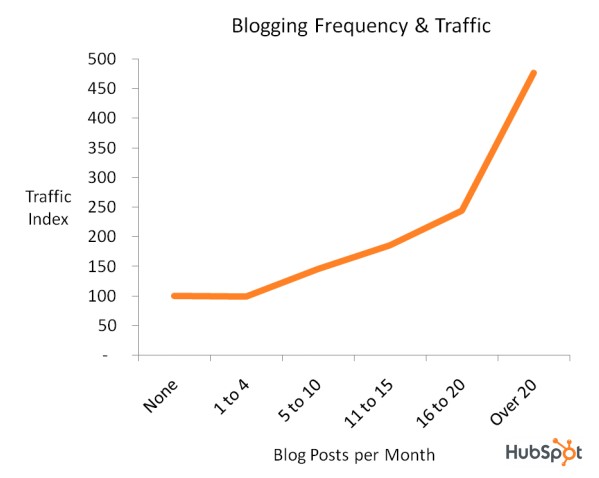With the explosion of social media sites and a whole range of blogging and content sharing platforms at your fingertips, it’s worth looking again at the way you blog and whether it is still right for your business. Are you getting the most out of your blog in 2013?
1/ Is your business best suited to this format?
Recently, social media news has been full of the success of image sharing sites Pinterest and Instagram. If you are a highly visual business looking to generate leads, you might want to look at creating accounts with visually-based social sites, or look at blogging through Tumblr, which supports multimedia sharing well. You can always do both: use a photo sharing site to showcase your visual appeal, then integrate these into longer traditional blog posts.
2/ Is your content shareable across the latest networks?
Even if you are not on every social network, bear in mind that your followers might be. Update your sharing buttons periodically to reflect new social media sites so that your audience will be able to share your content with their own followers.
3/ Are you making the most of multimedia?
You can mix traditional blog posts with videos, slideshows and images to bring more interest to your blog. As well as embedding multimedia from your accounts on Flickr, You Tube etc, you can create infographics with tools like Visual.ly and use them to illustrate your post. Infographics are great for sharing and may appear across multiple platforms. Just make sure you include your website on the image so if it goes viral people know where it came from.
4/ Know your end result
It’s important to know your overall strategy: what sort of audience you are looking to attract, and what business aims you have. Is your blog a showcase for your expertise? Is it a way of driving traffic towards your sales page? Keep that in mind when you post. Your posts should reflect the interests of their intended audience: there’s no point in attracting readers who have no interest in your business if that’s the primary reason behind your blog.
5/ Focus on quality, not gimmicks
Some people put a lot of effort into creating images or crafting Tweets that are intended to go viral, your blog audience will see through gimmicks: you want traffic that converts into business, and that means quality over quantity. While it is great to get a boost when a post gets shared widely, keep in mind your business goals and core audience when you are posting. Quality traffic with a high conversion rate is better than a high quantity of traffic that doesn’t convert to sales.
6/ Successful blogging takes dedication
Blogging is less about quick-wins and viral content (although this can help attract new readers) than building up a dedicated audience over time. Blogging takes dedication: a recent Hubspot report showed a strong correlation between blogging frequency and traffic generation. Just throwing out a couple of posts a month won’t grow your audience.

7/ Blog first, sell second
If your blog is overly ‘salesy’, your audience will see straight through you. Focus on providing good content for your audience first, and keep away from the hard sell. You can drive traffic to your business or products by ensuring your website is easy to navigate and links to your sales page are prominent. That way your readers can learn more if they want to. The odd special offer or product launch message is ok, but keep it to a minimum.
8/ Remember you are building a community
You can create a dialogue by asking questions of your audience. When you write a new post, ask for your readers’ opinions and experiences. Simply by asking what they think at the end of the post can generate far more comments than just talking about your opinion.
9/ Reach out
You don’t have to create all your content yourself. Reaching out to other industry professionals and asking them to contribute to your blog can really help to grow your community and position your business as thought leaders. If you don’t want to involve businesses you see as your direct competitors, try asking authors in your field, suppliers, customers, or other professionals you interact with on a regular basis. If you are a small business, you can expand your influence by asking experts from within the industry to guest post on your blog, or else offer to do the same on theirs (with a link back to your blog) to get your name known more widely.
10/ No ads
It’s tempting to go for quick monetization by filling your blog with advertisements, but there are at least three reasons why this is not the best direction for your blog:
- It cheapens your blog and makes it look less professional
- If readers click on the advert, they are clicking away from your blog
- If readers click on the advert, they are not clicking on your product, website link, services, or whatever else you are using your blog to promote. It’ll get you a few pennies, sure, but at the expense of hundreds or thousands of dollars of business?
Community engagement principles don’t change
Social media may be changing rapidly, but the rules of community engagement stay the same: listen as well as talk, ask for feedback, act on the comments you receive, give as well as take. As much as people enjoy easily-sharable sound bites and attention-grabbing graphics, they still want good content and thoughtful discussion, and long-form blogs continue to have a place for businesses that are dedicated to using them as part of their long-term aims.
What are your experiences? Have you made changes to your blog or social media strategy?
Originally Published in AmericanExpress Open Forum
Your posts should reflect the interests of their intended audience Click To Tweet Quality traffic with a high conversion rate is better than a high quantity of traffic that... Click To Tweet Blogging takes dedication Click To Tweet You don’t have to create all your content yourself. Click To Tweet Social media may be changing rapidly, but the rules of community engagement stay the same Click To Tweet
